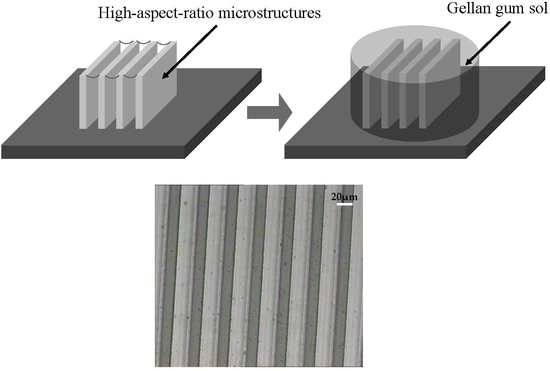A New Method of Fixing High-Aspect-Ratio Microstructures by Gel
Abstract
:1. Introduction
2. Materials and Methods
2.1. Conventional Defects
2.2. New Method
2.3. Experimental Setup
3. Results and Discussion
3.1. Influence of Different Kinds of Gel
3.2. Two Major Factors during the Observation Process
4. Conclusions
Acknowledgments
Author Contributions
Conflicts of Interest
References
- Saha, T.K.; Lu, M.; Ma, Z.; Zhou, W. Design of an Angle Detector for Laser Beams Based on Grating Coupling. Micromachines 2012, 3, 36–44. [Google Scholar] [CrossRef]
- Tang, B.; Sato, K.; Gosálvez, M.A. Sharp silicon tips with different aspect ratios in wet etching/DRIE and surfactant-modified TMAH etching. Sens. Actuators A Phys. 2012, 188, 220–229. [Google Scholar] [CrossRef]
- Zhou, J.; Liu, G.; Cui, H.; Xiong, Y.; Tian, Y. Reducing collapse in high aspect ratio structures. Proc. Inst. Mech. Eng. Part N J. Nanoeng. Nanosyst. 2012. [Google Scholar] [CrossRef]
- Stoykovich, M.P.; Cao, H.B.; Yoshimoto, K.; Ocola, L.E.; Nealey, P.F. Deformation of Nanoscopic Polymer Structures in Response to Well-Defined Capillary Forces. Adv. Mater. 2003, 15, 1180–1184. [Google Scholar] [CrossRef]
- Cao, H.B.; Nealey, P.F.; Domke, W.D. Comparison of resist collapse properties for deep ultraviolet and 193 nm resist platforms. J. Vac. Sci. Technol. B 2000, 18, 3303–3307. [Google Scholar] [CrossRef]
- Hattori, T. Non-aqueous cleaning challenges for preventing damage to fragile nano-structures: A review. ECS J. Solid State Sci. Technol. 2014, 3, N3054–N3059. [Google Scholar] [CrossRef]
- Tanaka, T.; Morigami, M.; Oizumi, H.; Ogawa, T. Freeze-drying process to avoid resist pattern collapse. Jpn. J. Appl. Phys. 1993, 32, 5813. [Google Scholar] [CrossRef]
- Koch, F.; Marschall, F.; Meiser, J.; Márkus, O.; Faisal, A.; Schröter, T.; Mohr, J. Increasing the aperture of X-ray mosaic lenses by freeze drying. J. Micromech. Microeng. 2015, 25, 075015. [Google Scholar] [CrossRef]
- Al-Halhouli, A.A.; Demming, S.; Waldschik, A.; Büttgenbach, S. Implementation of synchronous micromotor in developing integrated microfluidic systems. Micromachines 2014, 5, 442–456. [Google Scholar] [CrossRef]
- Tanaka, T.; Morigami, M.; Atoda, N. Mechanism of resist pattern collapse during development process. Jpn. J. Appl. Phys. 1993, 32, 6059. [Google Scholar] [CrossRef]
- Tanaka, T.; Morigami, M.; Atoda, N. Mechanism of resist pattern collapse. J. Electrochem. Soc. 1993, 140, L115–L116. [Google Scholar] [CrossRef]
- Stauffer, D.; Coniglio, A.; Adam, M. Gelation and critical phenomena. In Polymer Networks; Springer: Berlin/Heidelberg, Germany, 1982; pp. 103–158. [Google Scholar]
- Stauffer, D. Gelation in concentrated critically branched polymer solutions. Percolation scaling theory of intramolecular bond cycles. J. Chem. Soc. 1976, 72, 1354–1364. [Google Scholar] [CrossRef]
- Delamarche, E.; Schmid, H.; Michel, B.; Biebuyck, H. Stability of molded polydimethylsiloxane microstructures. Adv. Mater. 1997, 9, 741–746. [Google Scholar] [CrossRef]
- Namatsu, H.; Yamazaki, K.; Kurihara, K. Supercritical resist dryer. J. Vac. Sci. Technol. B 2000, 18, 780–784. [Google Scholar] [CrossRef]
- Namatsu, H.; Yamazaki, K.; Kurihara, K. Supercritical drying for nanostructure fabrication without pattern collapse. Microelectron. Eng. 1999, 46, 129–132. [Google Scholar] [CrossRef]
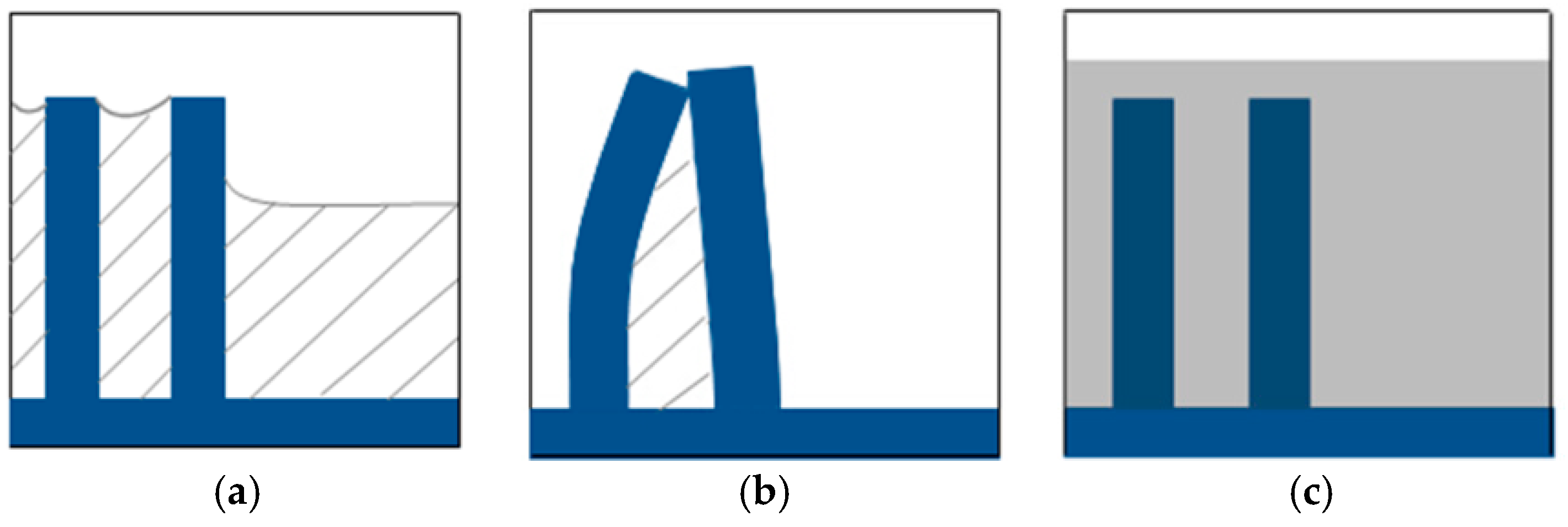
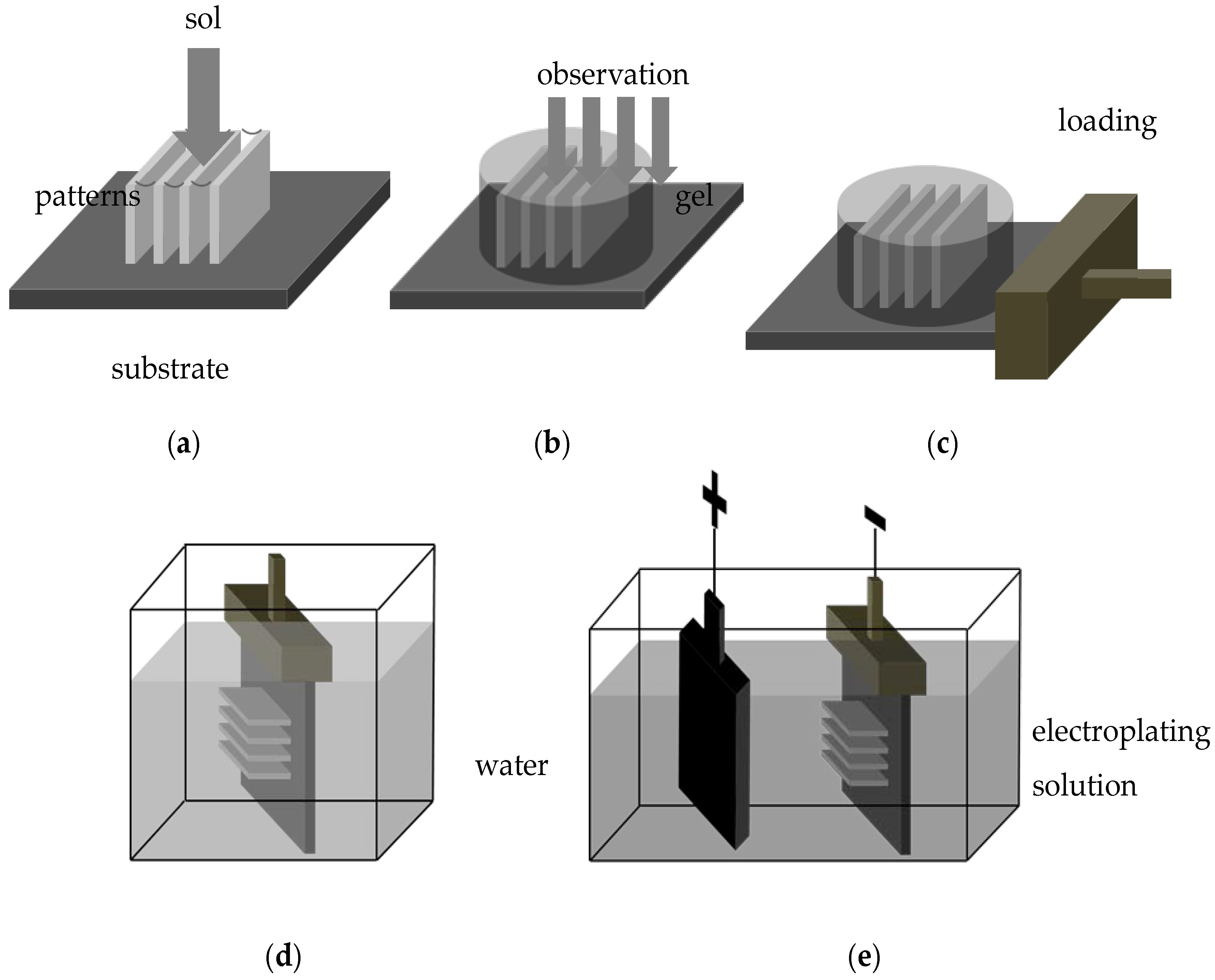


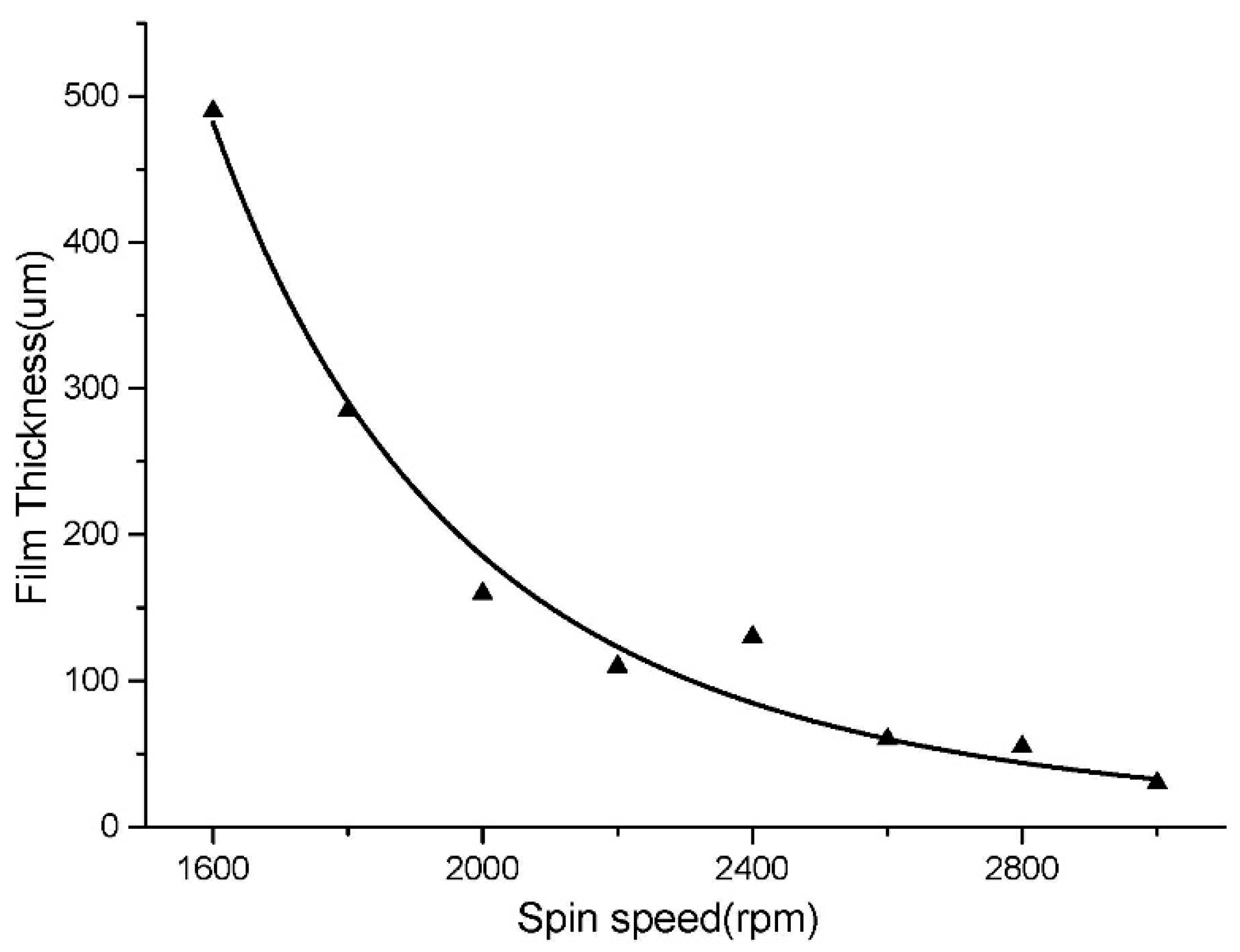

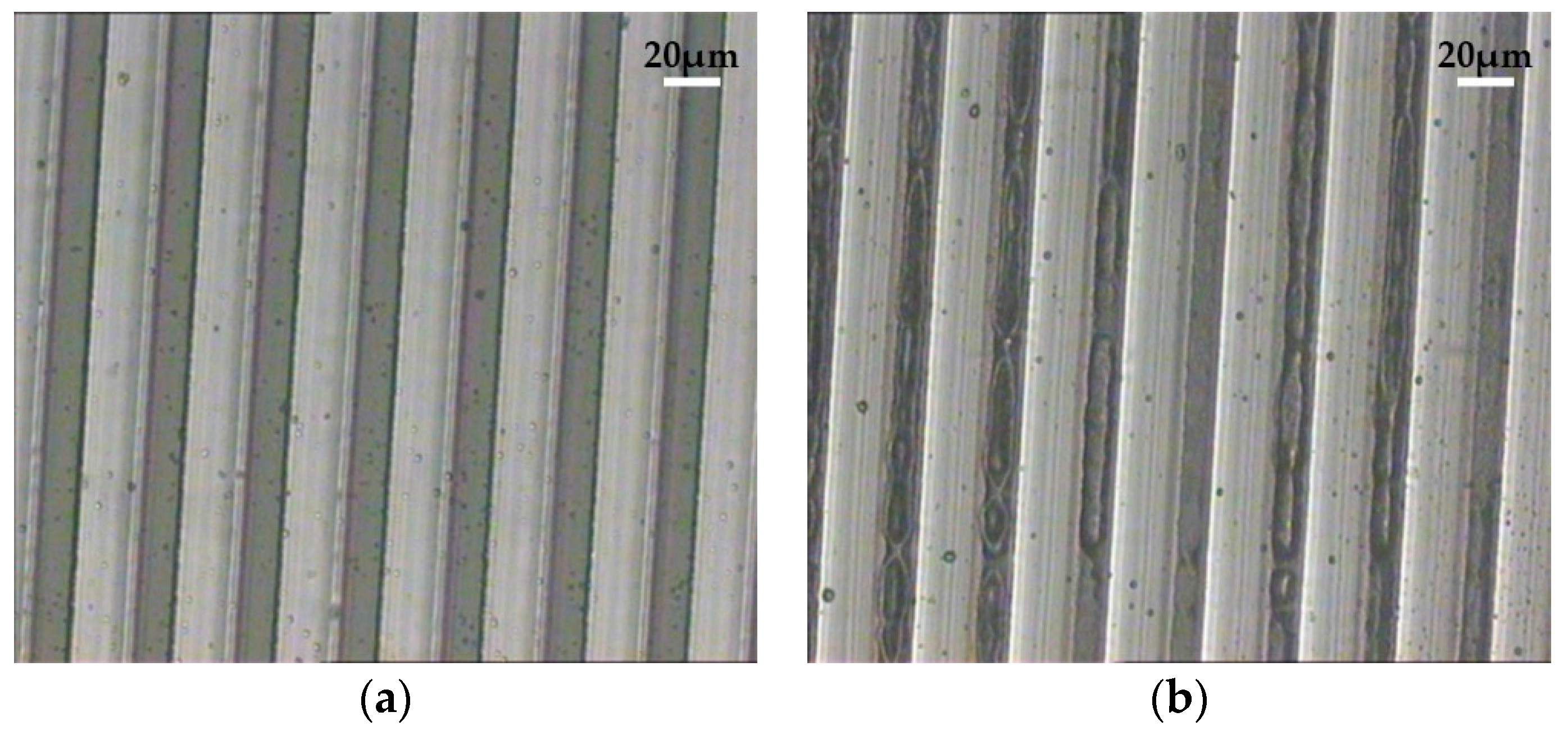
© 2016 by the authors. Licensee MDPI, Basel, Switzerland. This article is an open access article distributed under the terms and conditions of the Creative Commons Attribution (CC-BY) license ( http://creativecommons.org/licenses/by/4.0/).
Share and Cite
Chen, N.; Chen, X.; Xiong, P.; Hou, S.; Zhang, X.; Xiong, Y.; Liu, G.; Tian, Y. A New Method of Fixing High-Aspect-Ratio Microstructures by Gel. Micromachines 2016, 7, 115. https://doi.org/10.3390/mi7070115
Chen N, Chen X, Xiong P, Hou S, Zhang X, Xiong Y, Liu G, Tian Y. A New Method of Fixing High-Aspect-Ratio Microstructures by Gel. Micromachines. 2016; 7(7):115. https://doi.org/10.3390/mi7070115
Chicago/Turabian StyleChen, Nan, Xiangyu Chen, Penghui Xiong, Shuangyue Hou, Xiaobo Zhang, Ying Xiong, Gang Liu, and Yangchao Tian. 2016. "A New Method of Fixing High-Aspect-Ratio Microstructures by Gel" Micromachines 7, no. 7: 115. https://doi.org/10.3390/mi7070115





